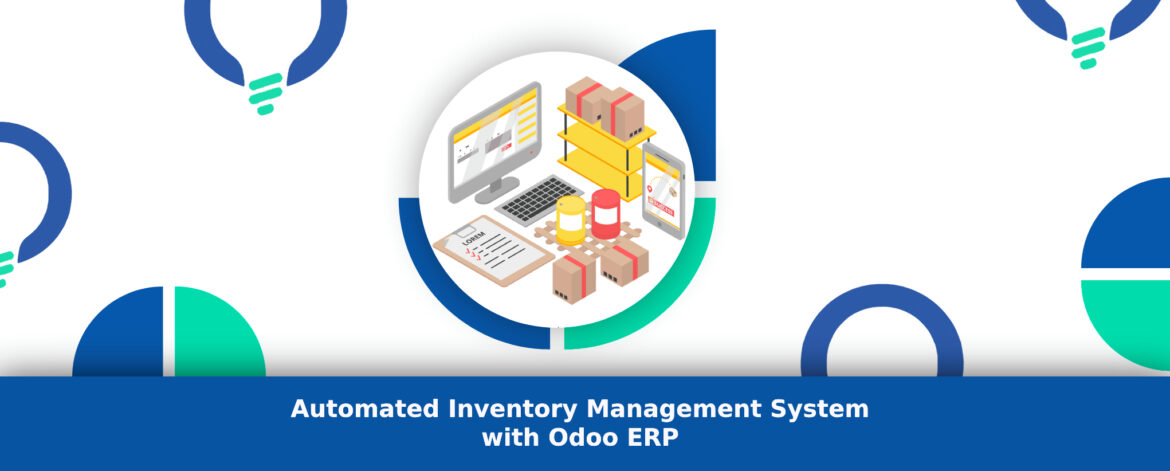It’s important to have a good accounting system to keep things running smoothly and make money. The need for real-time knowledge and competition is growing, so old ways of managing inventory can’t keep up. This is where automated inventory management system come in. They make it easier for businesses to keep track of, control, and make the best use of their stock levels. We at Reliution offer strong Odoo ERP solutions that are meant to make managing inventory easier and more automated. This gives companies a big edge over their competitors.
What is an Automated Inventory Management System?
An automated inventory system is a tech-based solution that lets companies keep real-time records of their inventory amounts, sales, orders, and deliveries. Compared to manual methods, computerized systems cut down on mistakes made by people, boost productivity, and give a complete picture of how stock is moving. They have tools for managing their inventory that make sure accurate and up-to-date information is always available so they can make smart business choices.
Odoo ERP is an open-source platform for managing inventory that works well with many business processes, such as logistics, buying, and sales. This powerful system gives businesses a central place to handle their stock inventory without having to do the same things over and over again by hand.
The Process of Automated Inventory Management
important steps that make it easier to handle stock with inventory management
- Tracking Real-Time Inventory: Continuously checking stock levels with automated systems lets you know exactly what’s in your building at all times. This real-time tracking helps keep from running out of stock or having too much of it.
- Stock Alerts and Replenishment: Businesses can set set levels of stock with an inventory control tool like Odoo. When a product hits a certain level, the system sends out an alert or starts the process of reordering it.
- Barcode Scanning and RFID: To correctly record incoming and outgoing stock, these technologies are frequently used in automated inventory system. They make sure that every product is accounted for by lowering the chance of human mistake.
- Centralized Data Management: One system keeps track of all the stock information, sales information, and order records. This centralized platform makes it easy for departments to view and look at data about how the business is doing.
- Order Management: Order systems can be linked to automated inventory system to make sure that orders are met quickly. When stock is needed, the system can send automatic buy orders to suppliers, which cuts down on delays and traffic jams.
Advantages of Automated Inventory Management System:
If you want to change the way your business works, you should get an automated inventory system. For example:
- Accuracy: Human error is less likely to happen with automated systems, which gives very correct data for inventory control.
- Time Efficiency: It takes a lot of time to count goods or make changes to spreadsheets by hand. Automation saves time because it keeps track of how stock moves in real time.
- Cost Savings: Businesses can avoid extra costs and lost sales by using automatic systems to keep their shelves from being too full or too empty.
- Better Decision-Making: Businesses can make better decisions about what to buy and how to divide up their stock when they have up-to-date inventory info.
Techniques to Improve Your Automated Inventory Process
To get the most out of an automated system, it’s important to follow best practices and tips for managing stock supplies more efficiently.
To get the most out of an automated system, it’s important to follow best practices and tips for managing stock supplies more efficiently.
Categorize Your Inventory
Putting products into groups based on how often they sell and how much they cost is a popular method. With the ABC method, material is split into three groups:
- A-items are high-value products that require tight control.
- B-items are moderate-value products.
- C-items are low-value, high-quantity items that don’t need as close monitoring.
You can better use your resources and keep the right amount of stock if you focus more on A-items.
Implement Just-In-Time (JIT) Inventory
When you use JIT, you only keep a small amount of stock on hand and only buy what you need to meet customer needs. This lowers the cost of holding, but it needs to be closely monitored and an inventory management system like Odoo to be used to keep from running out of stock.
Set Reorder Points
Find the best time to reorder each item by using the data from your automatic system. This keeps the store from having too much or too little stock. Businesses can set these places in Odoo’s stock inventory management software to automatically reorder based on them.
Use Barcoding and RFID Technology
Using barcodes or RFID technology to automatically keep track of goods can make things run much more smoothly. It cuts down on mistakes made by people, speeds up inventory checks, and gives correct data in real time.
Integrate with Other Systems
If you want your open source inventory management tool to work well, you should connect it to other business processes like accounting, sales, and supply chain management. With this integration, your inventory data will always match up with real-time business deals.
Examples of Automated Inventory Management in Action
To show how useful automated inventory system are, let’s look at how they help different types of businesses:
- Retail: In the retail sector, companies often have to deal with a lot of different goods and a lot of sales. They can keep track of every item in real time with automated inventoryn tools, so they never run out of stock or order too many goods.
- E-commerce: To get orders out fast, online stores depend on keeping track of their stock correctly and on time. With an automatic inventory system built into their platform, they can make sure that orders are filled quickly and that customers are happy.
- Manufacturing: Keeping the right amount of raw materials in stock is very important for producers. An automated inventory system helps keep an eye on what materials are available so that production plans don’t get thrown off.
Effective Tips for Implementing an Automated Inventory Management System
Here are some useful tips for companies that want to set up an automated inventory management system that works well:
- Choose the Right Software: Select a system that works well for your company. Odoo ERP is a great choice because it is open source, flexible, and has all the tools you need to manage your inventory.
- Train Your Team: Your team still needs to know how to use the software well, even if it is automated. Make sure your workers know how to get to inventory reports, set reorder points, and keep an eye on stock levels.
- Regular System Audits: Sometimes, even automatic systems need to be checked to make sure everything is working right. Regular system checks can help find problems and improve how well the system works.
- Monitor Performance with Reports: Odoo and most other inventory management tools have powerful reporting features. Keep an eye on key performance indicators (KPIs) like keeping costs, product demand trends, and the rate at which stocks are sold.
Conclusion:
Any business, no matter how big or small, can benefit from an automated inventory management system like the one Odoo ERP provides. Companies can cut down on mistakes made by people, get the most out of their stock, and save a lot of money on running costs by using technology. We at Reliution are experts at setting up effective inventory systems that work with your business goals and give you a strong way to control your stock in real time.
Businesses can get real-time information, make customers happier, and eventually make more money by automating their processes. Getting the right inventory control tool is important for long-term success whether you’re in retail, manufacturing, or e-commerce. Getting a system like Odoo that is reliable, scalable, and flexible will protect your operations in the future and help your business become more efficient.







